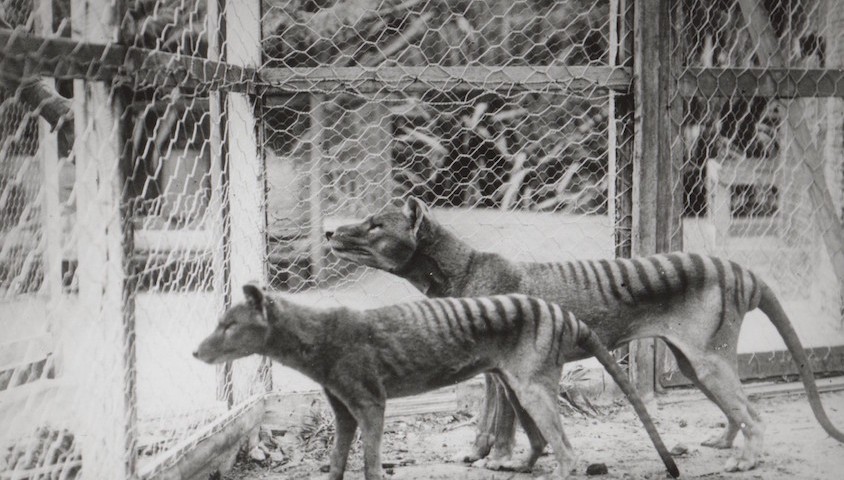America has bigfoot, Scotland has the Loch Ness monster and Latin America has the chupacabra. While some Australians may see the mythical bunyip as being most analogous to these international beasties, it has never drawn quite the same level of interest – and false sightings – as the Tasmanian tiger.
However, the Tasmanian tiger, or thylacine (Thylacinus cynocephalus) differs from these other creatures in that it is, or was, a real animal. Appearing in the fossil record some four million years ago, this carnivorous marsupial once ranged throughout Australia, but began to disappear from the mainland some 2000 years ago. In Tasmania, however, the species remained up until the 1930s.
That is, the general consensus is that the species went extinct, with the last confirmed wild individual shot by a farmer in the year 1930. Although not everyone is satisfied with that explanation, and Tasmania’s naturally rugged terrain and remote wilderness areas has encouraged the opinion that the species may still cling to existence somewhere, with some even claiming to have seen it.
Col Bailey is one such man. An avid bushwalker and retired landscape gardener, Bailey began writing on the topic of the thylacine for the Derwent Valley Gazette in the 1990s. He has since published two books on the subject and is in the process of releasing his third, Lure of the Thylacine, due out in May.
It is Bailey’s firm belief that the thylacine still exists in the wild, and he hopes by capturing the stories of other historic sighting and more recent credible witnesses, that more people may come to entertain the possibility of the species’ continued plight. As he told Wild in a recent interview, he wouldn’t believe that it still existed if he hadn’t spotted it himself.
“My real interest began in the summer of 1967 when I sighted a strange animal while canoeing the Coorong Lagoon in southeastern South Australia,” he said. “This sighting was actually the genesis to what has since become a life-long quest to prove to the world the animal still exists. Subsequent research revealed the animal was thought by locals to be a Tasmanian tiger.”
While Bailey isn’t convinced the animal he spotted that day was a thylacine, it did peak his interest in its possible existence and further exploring rewarded him with a sighting.
“Over the years since I’ve seen a live thylacine in the Weld Valley in Tasmania, 1995. I smelt another in the year 2000 in the Sawback Range near Adamsfield, Tasmania, and I’ve heard its cry on at least four occasions; in the Vale of Rasselas, along the Snake River in southwestern Tasmania, and also the Jane River on Tassie’s west coast.”
Bailey’s publications and ongoing search for the thylacine lends him to being something of an expert of the matter, and as such he’s received many reports of sightings over the years. Some of these are credible, he says, while the majority are less than so.
“I’ve received hundreds of sighting reports from all areas of the state, and these have tailed off significantly over recent years to around five or six a year. Of these, perhaps only one or two would be worth investigating. On average only about five per cent of all sightings would ring true, and believe me, I’ve heard some doozies.”
The first book released by Bailey in 2001, Tiger Tales (HarperCollins) sold some 7,500 copies and is now considered something of a collector’s item. Much like his upcoming book, this was a collection of tales of human interactions with the Tasmanian tiger from the 19th Century to the present. By contrast, his second book, Shadow of the Thylacine, was an autobiographical account of his own search for the animal.
Despite the many credible anecdotes and sightings Bailey has uncovered in his research, he believes it will take something much more concrete before the scientific consensus changes on the matter.
“Short of a live or freshly dead thylacine, nothing would convince; photographs can be faked, as can footprints etc., although conclusive DNA evidence is also a possibility of proving one way or the other.”
There has also been some debate in recent years surrounding the merits of resurrecting the thylacine via cloning techniques, but of this avenue Bailey is also wary.
“Far better to leave the few remaining thylacine run free from human interference,” he explained. “Sadly, if the animal were proven to still be with us it would, I fear, become a political football, such is its immense value in the sphere of things.”


